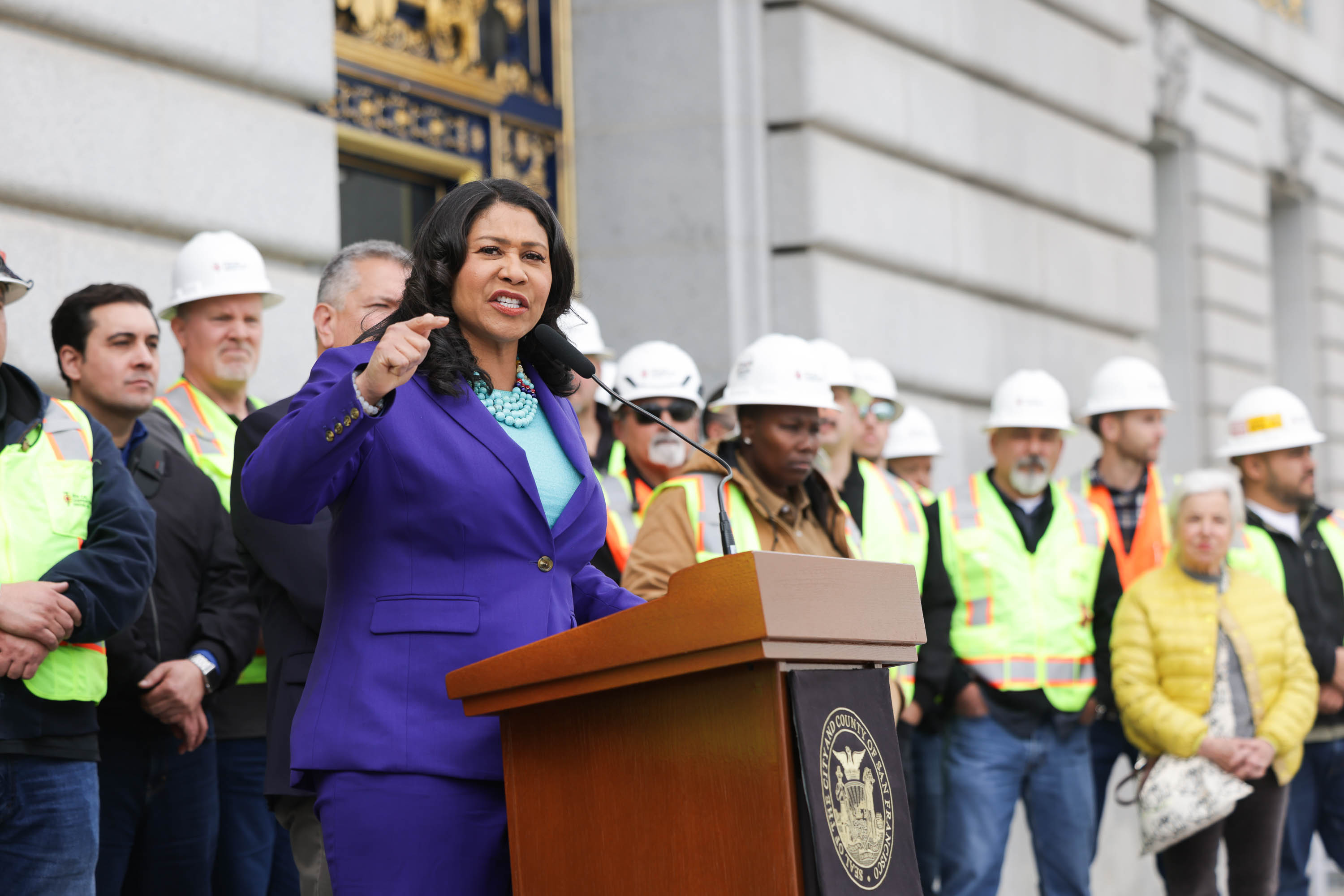As San Francisco continues to hash out its plans to accommodate tens of thousands of new housing units in the coming years, Mayor London Breed on Wednesday said smaller projects should be prioritized so the city can reach its production goal.
In a letter sent to the Planning Commission on Wednesday, Breed said mid-rise developments in the six- to eight-story range will help usher in faster compliance with the state-mandated Housing Element.
In doing so, she cited conversations with housing planners and financiers who have conveyed difficult economic conditions that make skyscrapers challenging to pencil out. However, the mayor added that high-rise developments should still be considered on the city’s “widest and busiest” roadways.
The mayor also said the city should try to increase the density of developments near transit and commercial zones without stretching height limits—an effort that is already underway through legislation she’s working on with Supervisor Myrna Melgar that has faced some pushback from Board President Aaron Peskin.
In March, Peskin made tweaks to Breed and Melgar’s bill implementing rent control and restrictions on the use of the state’s density bonus, which could impact height. The legislation is currently making its way through City Hall.
Wednesday’s letter indicated the strategy of what is known as “density decontrol,” which seeks to increase the number of units inside a parcel, could be expanded to other parts of the city.
The mayor additionally said San Francisco should take advantage of sites like parking lots to create affordable and mixed-income housing.
“This ambitious process is fundamentally about doing what is best for San Francisco and its residents while also addressing the reality that our City, as built today, cannot meet our current or future housing needs,” Breed’s letter reads. “And I believe we can do all of this while still protecting the uniqueness of our diverse San Francisco neighborhoods.”
Breed’s directive comes as the city tries to figure out how to implement a state-mandated housing plan that calls for San Francisco to accommodate over 80,000 new units by 2031. This year, the Planning Department put forth rezoning plans that aimed to increase height limits across large swaths of the city that include the Richmond, Sunset, Castro and Nob Hill neighborhoods. The plans need to be finalized by the beginning of 2026.
The proposal has set up a tense battle between the increasingly powerful YIMBY coalition—who argue the city needs to ramp up production of housing to combat a lack of low-cost options—and their opponents, who assert that wide-scale upzoning won’t lead to affordability and could disturb the character of neighborhoods.
Housing has already become an issue in the mayor’s race, with Breed stating in her State of the City address last month that she would block any “anti-housing” legislation that passed her desk.
That promise came into play later in March after Breed vetoed presumptive mayoral candidate Peskin’s housing density legislation, a move that was later struck down by board members in a defeat for the sitting city leader.
In Wednesday’s letter, the mayor took a more conciliatory approach to the housing issue: “Some believe the current proposal [from the Planning Department] doesn’t go nearly far enough and that we need to significantly expand its scope—others are concerned about what more height and density mean for their neighborhood and for the San Francisco that they know and love.”
Jake Price, an organizer for the Housing Action Coalition in San Francisco who has advocated for the city’s upzoning, said he was supportive of the mayor’s direction despite the fact it is calling for smaller developments in certain cases.
Price added that the initial rezoning map is too narrowly focused along certain streets—and that housing opportunities should be spread out more. For example, he cited Geary Boulevard as a road being considered for upzoning while just a block away, Anza Street remains unchanged.
At odds with the Planning Department are a variety of neighborhood coalitions, who say the rezoning plans are far too expansive.
One of those groups, Neighborhoods United SF, has sent out mailers calling the proposal “extreme and unnecessary.”
Lori Brooke, co-founder of the organization, wrote in response to Breed’s letter on Wednesday, “The Mayor’s response underscores the significant public backlash against her poorly thought-out upzoning initiatives. Rather than tackling the affordable housing shortage, this proposal fosters a speculative market and risks displacing existing small businesses and renters.”
Attorney Lee Hepner, a former aide of Supervisor Peskin’s, wrote on X he was “gobsmacked” by Breed’s proposal.
“This is clear confirmation that Breed’s veto was a vacuous political jab not rooted in policy,” he wrote. “To be clear, 6-8 story buildings on transit-oriented thoroughfares is GOOD policy. But massively hypocritical and a stunning pivot from Breed’s viral condemnation of this approach just last week.”
